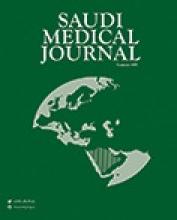Abstract
OBJECTIVE: To determine the incidence of uterine rupture in Ministry of Health Hospitals in Bahrain and to find the risk factors associated with this obstetrical tragedy.
METHODS: A case control study was conducted on all the cases of uterine rupture in Ministry of Health Hospitals in Bahrain during the period 1st of January 1990 until 31st of December 1999. The following risk factors which, were studied, included parity, gestational age, previous cesarean delivery, previous cesarean section for cephalopelvic disproportion, previous evacuation of the uterus, induction and or augmentation of labor, malpresentation, duration of the labor, type of the delivery and birth weight.
RESULTS: Forty-five uterine ruptures were reported during the study period with an incidence of 1 in 2213 deliveries. Previous cesarean delivery, prior cesarean section for cephalopelvic disproportion, malpresentation, induction and augmentation of labor were found to be significant risk factors for uterine rupture. While high parity, previous evacuation of the uterus, duration of labor, type of the delivery, birth and weight were not associated with uterine rupture.
CONCLUSION: An Obstetrician should be careful in monitoring the progress of labor in women with previous cesarean delivery to avoid the occurrence of a ruptured uterus. Oxytocin or prostaglandin or both should be used judiciously to prevent catastrophic uterine rupture.
- Copyright: © Saudi Medical Journal
This is an open-access article distributed under the terms of the Creative Commons Attribution-Noncommercial-Share Alike 3.0 Unported, which permits unrestricted use, distribution, and reproduction in any medium, provided the original work is properly cited.






